Zombie Bunny is Reader-supported and may earn an affiliate commission through links on our site.
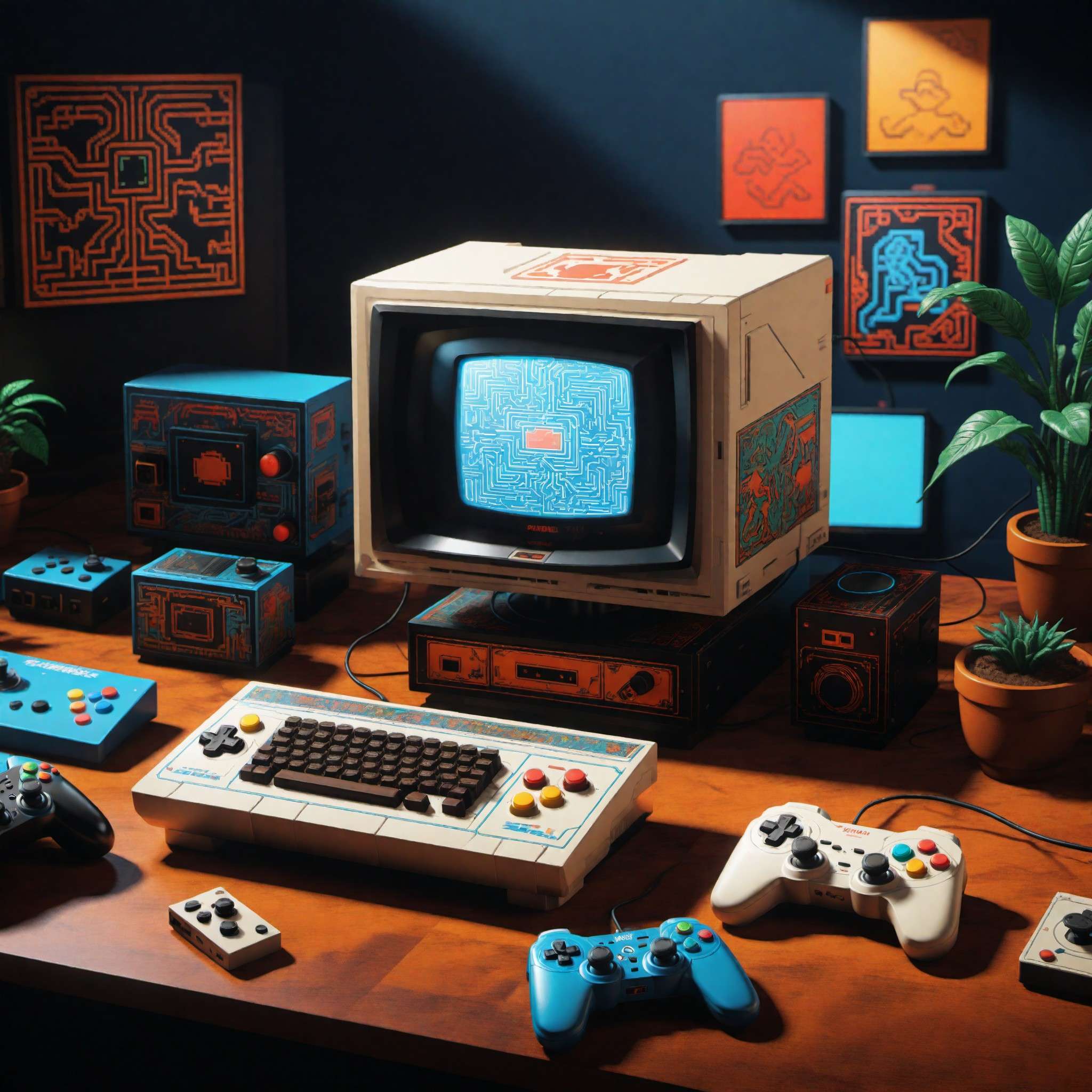
Rebooted: The Resurgence of Retro Gaming
Discover the resurgence of retro gaming in the PC world, and why old-school pixels are making a comeback! #PCGaming #Retro
Explore the intriguing world of retro gaming as it makes a resurgence in the modern era. This blog post delves deep into the nostalgic charm of classic video games, their lasting impact, and the global trend that’s bringing them back to life. Learn why these pixelated treasures from the ’80s and ’90s are not just about recreating the past but celebrating it. Journey through the roots of retro gaming, its appeal across generations, and its significant influence on the gaming industry. Whether you’re a vintage game enthusiast or a newbie, this post will immerse you in the captivating realm of retro gaming.
Introduction: The Rediscovery of the Past
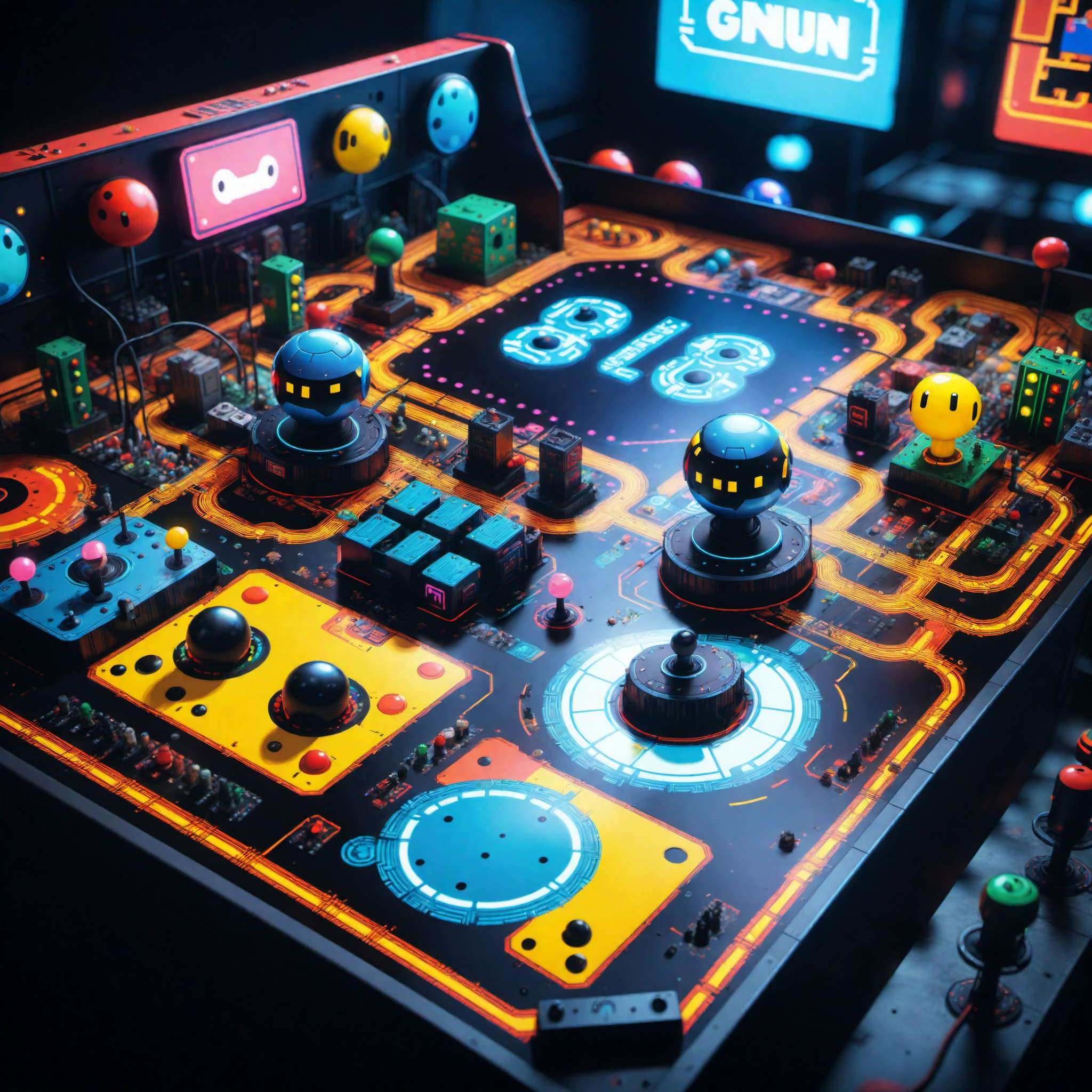
© Copyright , ZombieBunny.Org
Explanation of the retro gaming resurgence
Retro gaming’s resurgence is like a phoenix reborn from the ashes of the past. This phenomenon isn’t merely a nostalgic trip down memory lane for those who grew up in the ’80s and ’90s. Instead, it is a global trend that has seen a significant rise in popularity across all age groups. The term ‘retro gaming’ typically refers to playing or collecting older video games and systems, including arcade games, consoles like the Nintendo Entertainment System, and classics like ‘Pac-Man’ and ‘Space Invaders.’
The rebirth of retro gaming is driven by a mix of nostalgia, the desire for simpler gameplay, and the appreciation for pixel art and chiptune soundtracks. Many gamers find themselves longing for the less complicated times when games were focused more on storytelling and gameplay rather than graphics and production value. Additionally, the charm and simplicity of retro games offer a unique experience that starkly contrasts with modern games’ complexity. The retro gaming movement is not just about recreating the past but celebrating it while bringing it into the present, showing that sometimes, the old ways can still be the best ways.
Overview of the blog content
In this blog post, we will delve deeper into the resurgence of retro gaming, exploring its roots, its appeal, and its impact on the gaming industry. We begin by defining what constitutes ‘retro gaming’ and taking a nostalgic journey back to the origins of some of the most iconic games of the past.
We will then examine why these games are making a comeback, discussing the role of simplicity, nostalgia, and game design in their enduring appeal. Moving forward, we will explore how the past and present are fusing together, with retro games finding their place in the modern gaming era. We will also delve into the art of reviving classic games and the role of the vibrant retro gaming community in keeping these games alive.
Further, we will discuss the hobby of game collecting and how this passion is contributing to the retro gaming trend. Looking ahead, we will make some predictions about the future of retro gaming, exploring how technology might shape this domain. Finally, we will conclude with some closing thoughts on the timeless charm of retro gaming. This journey promises to be a thrilling ride for those who remember these games from their childhood and for the new generation of gamers who are discovering them for the first time.
Setting the context of retro gaming
Retro gaming sits at a fascinating intersection of the past and present, where old-school charm meets the modern world’s technologies. The concept encapsulates a broad spectrum of games and experiences, all of which share a common thread: they are a part of our collective digital heritage. From the earliest arcade games and the home console boom of the 80s to the 90s’ 16-bit era, these games were the pioneers of the gaming industry as we know it today.
The charm of retro gaming lies not just in the games themselves but also the experiences they offer. Every pixelated character, chiptune soundtrack, and high score represents a piece of gaming history. These games transport us back to our childhood living rooms, the bustling arcades, or the schoolyards where we traded game cartridges. While the technology has advanced significantly since those early days, the heart and soul of gaming remain rooted in these retro classics.
Today, retro gaming is more than a nostalgic hobby – it’s a thriving subculture within the broader gaming community. It’s about celebrating the origins of gaming, honoring the classics, and keeping the spirit of simplicity and pure fun alive in an industry increasingly dominated by high-end graphics and complex gameplay. As we journey through this blog, we’ll unravel the various aspects of this exciting resurgence, exploring why these old-school games continue to captivate us decades after their release.
Defining Retro: A Blast from the Past
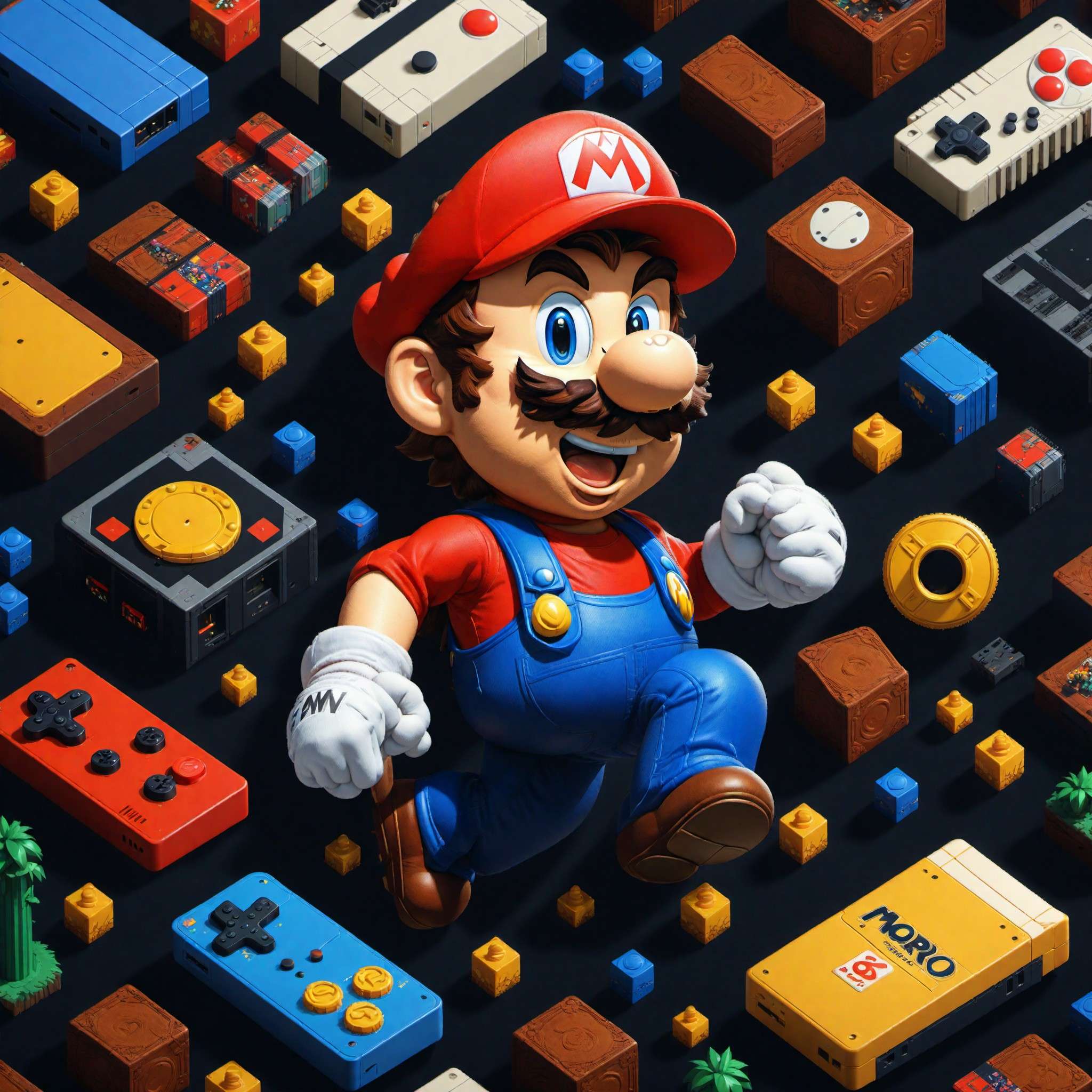
© Copyright , ZombieBunny.Org
Definition of retro gaming
Let’s start at the very beginning by defining what we mean when we talk about ‘retro gaming.’ This term broadly encompasses the play or collection of older video games, including but not limited to, arcade games, consoles, and computer games from the 1980s and 1990s. These games are often defined by their distinctive 8-bit and 16-bit graphics, chiptune soundtracks, and unique game mechanics that differ significantly from today’s high-end, visually immersive games.
Retro gaming is about celebrating these classics that laid the foundation of the gaming industry as we know it today. It’s about stepping back from the world of virtual and augmented reality, motion-sensing controls, and hyper-realistic graphics, and diving into the world of pixelated characters, side-scrolling action, and single-button gameplay.
The definition of retro gaming varies among individuals, with some considering games from the early 2000s as retro, while others strictly categorize only games from the 80s and 90s as such. Regardless of the specifics, the essence of retro gaming remains the same: it’s about reliving the past, appreciating the simplicity and creativity of early game design, and most importantly, remembering that the core of any game, regardless of its era, is to provide joy and entertainment.
Historic perspective of gaming
A journey into retro gaming is akin to stepping into a time machine that takes us back to the origins of the gaming industry. The late 70s and early 80s marked the dawn of video gaming, with the introduction of arcade games like ‘Pong’ and ‘Space Invaders.’ These games’ enormous success led to the birth of home gaming consoles, with the Atari 2600 and the Nintendo Entertainment System (NES) becoming household names.
The 90s witnessed the evolution of gaming technology, with the emergence of 16-bit consoles like the Super Nintendo Entertainment System (SNES) and Sega Genesis. This era introduced us to iconic characters such as Sonic the Hedgehog and solidified Mario’s status as a gaming legend. The 90s also saw the advent of 3D graphics and the Playstation era, pushing the boundaries of what games could offer in terms of visual immersion and gameplay complexity.
Each of these periods in gaming history played a crucial role in shaping the industry and defining the retro gaming genre. These games, despite their technological limitations, were masterpieces of creativity and innovation. They captivated players with compelling storytelling, engaging gameplay, and memorable characters, leaving a lasting legacy that continues to influence modern gaming. As we celebrate the resurgence of retro gaming, we also pay homage to these historic milestones that have made gaming the dynamic, diverse, and immersive medium it is today.
Introduction of key retro games
To truly understand retro gaming’s allure, it’s essential to highlight some of the key games that define the genre. These are the classics that have stood the test of time, resonating with gamers for their innovation, unique gameplay, and cultural impact.
First, we cannot overlook ‘Pac-Man,’ the maze arcade game that took the world by storm in the 80s. Its simple yet addictive gameplay, characterized by the chomping yellow character navigating a maze while avoiding ghosts, became a cultural phenomenon.
Next is ‘Super Mario Bros.’ for the NES, arguably one of the most influential games of all time. The game’s engaging platforming gameplay, combined with its memorable characters and catchy music, set the standard for future platformers and catapulted Mario to iconic status.
The Sega Genesis gave us ‘Sonic the Hedgehog,’ a game that embraced speed and introduced a cool and edgy character to rival Mario. Its fast-paced gameplay and vibrant graphics won over fans and remain beloved attributes of the series.
Lastly, ‘The Legend of Zelda’ for the NES introduced a level of depth and complexity not seen before in console games. Its expansive world, intricate puzzles, and compelling story set the stage for the action-adventure genre.
These games, among others, form the backbone of the retro gaming industry. Their enduring appeal lies in their ability to deliver pure, unadulterated fun, reminding us that at the heart of every game is the joy of play.
The Retro Revival: A Return to Simplicity
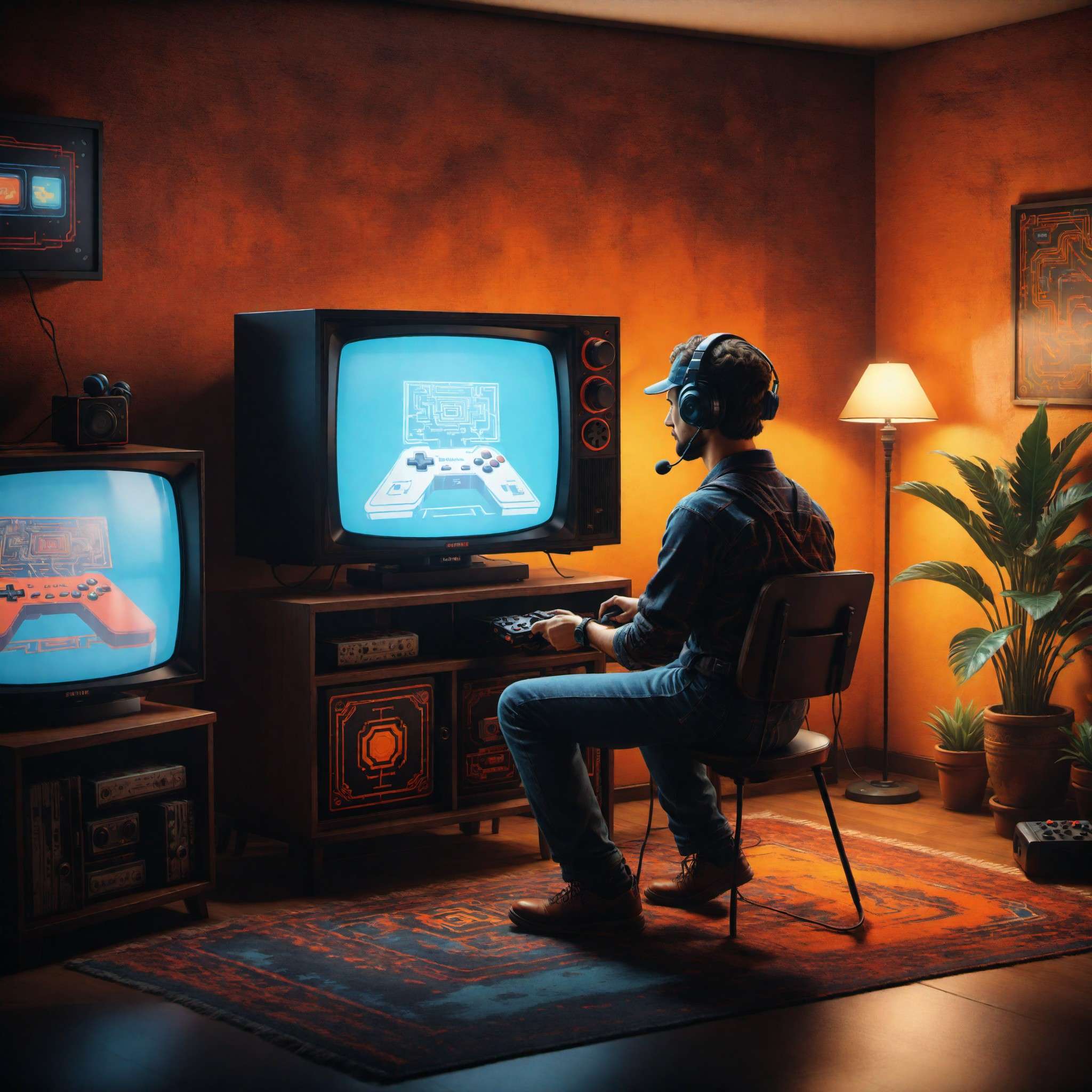
© Copyright , ZombieBunny.Org
Why is retro gaming popular again?
The resurgence of retro gaming in today’s digital age might seem surprising to some. Still, its rising popularity can be attributed to several factors that resonate with a broad spectrum of gamers. Firstly, there’s a sense of nostalgia that these games evoke. For many, these games are a trip down memory lane, a chance to relive their childhood and revisit those early gaming experiences.
But nostalgia isn’t the only driving force behind retro gaming’s resurgence. These games also represent a return to simplicity in an era where video games have become increasingly complex. Retro games, with their straightforward controls and gameplay, are often more accessible to a wider audience. They harken back to a time when games were less about high-end graphics and more about the joy of play.
Another critical factor is the timeless appeal of retro games. Despite their age, games like ‘Super Mario Bros.’ and ‘Pac-Man’ continue to entertain with their engaging gameplay and charming aesthetics. Their enduring popularity is a testament to their quality and the universal appeal of their game design.
Finally, the rise of digital platforms and the availability of retro games have also contributed to the trend. From digital downloads to dedicated retro consoles, it’s now easier than ever to access these classic games, allowing a new generation of gamers to discover and appreciate the charm of retro gaming.
Role of simplicity in retro gaming
The role of simplicity in retro gaming is a key aspect that contributes to its allure. The gaming landscape has evolved tremendously over the years, with modern games offering high-definition graphics, complex narratives, and intricate gameplay mechanics. While these advancements have undeniably enriched the gaming experience, they have also increased the complexity of games. This complexity, while engaging for some, may be overwhelming for others.
In contrast, retro games thrive on simplicity. The 8-bit graphics, linear narratives, and straightforward controls make these games accessible and easy to understand. Whether it’s navigating the mazes in ‘Pac-Man’ or jumping over obstacles in ‘Super Mario Bros.,’ the simplicity of these games allows players to focus on the pure fun of gameplay. This simplicity also extends to the game design, where a limited color palette and pixelated graphics result in distinctive, charming aesthetics that have stood the test of time.
Furthermore, the simplicity of retro games fosters a sense of accomplishment. They present clear objectives, and reaching those goals, whether it’s achieving a high score or rescuing the princess, provides a gratifying sense of achievement.
In a world where games are becoming increasingly complex and time-consuming, retro games offer a refreshing change of pace. Their simplicity serves as a reminder that at its core, gaming is about entertainment and fun. This simplicity, coupled with their nostalgic appeal, makes retro games a timeless classic in the gaming world.
The allure of nostalgic gaming
Nostalgia plays a significant role in the appeal of retro gaming. For many, these games are a portal to the past, a way to relive fond memories of childhood. Playing a retro game can transport someone back to simpler times, reminding them of the thrill they felt when they beat a level or achieved a high score. It’s this emotional connection, this sense of reliving happy moments, that adds a layer of charm to these games beyond their gameplay mechanics.
But nostalgic gaming isn’t just about personal memories. It also represents a collective nostalgia, a shared cultural experience. Retro games like ‘Super Mario Bros.’ or ‘Space Invaders’ were not just popular games of their time; they were cultural phenomena that left a significant impact on society. They were part of the soundtrack of our lives, and playing these games allows us to connect with that shared history.
Moreover, the nostalgia factor also extends to the aesthetics of retro games. The pixel art graphics and chiptune soundtracks have an unmistakable charm that modern games often lack. These elements give retro games a unique identity and are now celebrated as art forms in their own right.
In essence, the allure of nostalgic gaming lies in the emotional connections we form with these games. They remind us of our past, allow us to relive cherished memories, and connect us with a shared cultural history, making them timeless in their appeal.
Not Just Nostalgia: The Enduring Appeal of Retro Games
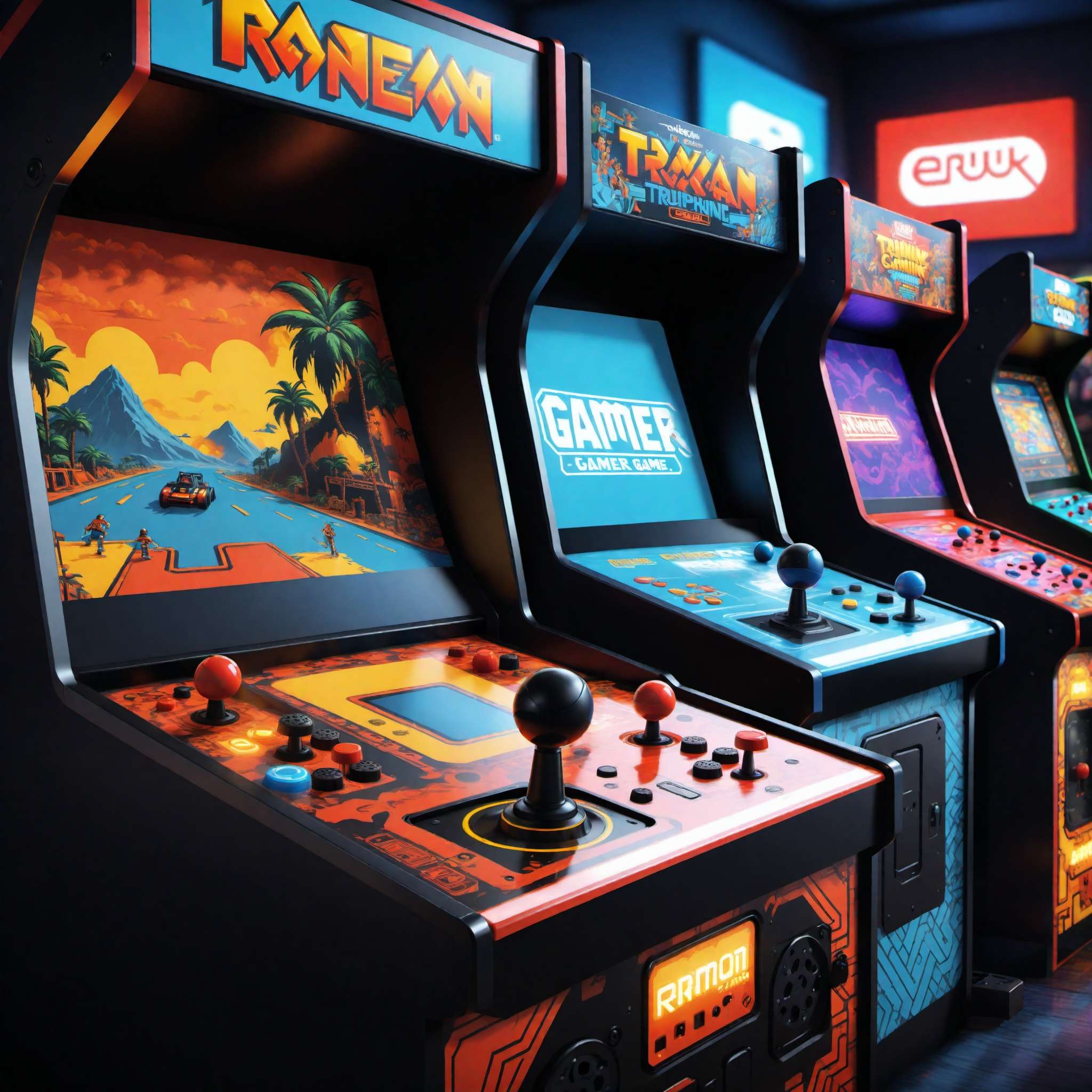
© Copyright , ZombieBunny.Org
The enduring appeal of retro games
The enduring appeal of retro games lies in their timeless ability to captivate players, regardless of the advancements in gaming technology. Many of these games were pioneers, breaking new ground in gameplay mechanics, storytelling, and artistic expression, and their ingenuity continues to resonate with gamers today.
At their core, retro games are about the joy of play. They offer a straightforward, immersive experience that focuses on fun, making them accessible to a wide range of players. Whether it’s the simple yet addictive challenge of collecting dots in ‘Pac-Man’ or the thrill of saving the princess in ‘Super Mario Bros.’, these games deliver a sense of satisfaction and accomplishment that transcends graphics and technology.
The pixel art graphics and chiptune soundtracks of retro games have a unique charm of their own. They represent an aesthetic that is distinctive and nostalgic, and have been celebrated as an art form in their own right. This retro aesthetic has influenced modern games, with many adopting pixel art styles and chiptune music to evoke a sense of nostalgia and charm.
Moreover, retro games provide a link to the past, allowing players to experience the history of video gaming. They serve as a reminder of how far gaming has come, and the roots from which it has grown. This connection to gaming’s past, combined with the pure enjoyment they offer, ensures that retro games continue to captivate players, old and new alike.
The role of nostalgia in the resurgence
Nostalgia undeniably plays a significant role in the resurgence of retro gaming. For many gamers, especially those who grew up during the 80s and 90s, retro games evoke fond memories of their childhood. They transport gamers back to a simpler time, conjuring up images of afternoons spent in front of the TV with a joystick in hand, immersed in digital adventures. This emotional connection provides a potent lure, drawing players back to these games decades after their release.
However, nostalgia in retro gaming isn’t limited to personal memories. It also evokes a collective sense of nostalgia for a bygone era of gaming. Retro games serve as a shared cultural touchstone, a common language among gamers. They hearken back to a time when the gaming community was still nascent, when high scores and game secrets were shared in school playgrounds or over the phone. This shared nostalgia fosters a sense of community and camaraderie among gamers, further fueling the retro gaming trend.
Moreover, nostalgia also has a tangible impact on game design. Many modern games and apps have capitalized on this nostalgia, incorporating retro aesthetics into their design, or even reviving classic games for modern platforms. This blending of the old and new not only appeals to nostalgic gamers but also introduces a new generation to the charm and simplicity of retro games, ensuring their enduring appeal.
The impact of game design and playability
Game design and playability are critical factors contributing to the enduring appeal of retro games. These games, despite their technological limitations, were masterpieces of creativity and innovation. Their straightforward design, unique gameplay mechanics, and compelling narratives set them apart, making them as enjoyable today as they were during their initial release.
The design of retro games often focused on simple, intuitive controls and gameplay mechanics. This simplicity made the games accessible to a wide array of players, from casual gamers to gaming enthusiasts. Today, amidst the complexity of modern games, the simplicity of retro games offers a refreshing change of pace, making them popular among both veteran gamers and newcomers.
Playability is another crucial aspect of retro games’ enduring appeal. Many retro games, like ‘Super Mario Bros.’ and ‘Pac-Man,’ offer an ‘easy to learn, hard to master’ experience. This balance ensures that the games remain challenging and engaging, regardless of how many times you play.
The impact of game design and playability in retro games extends beyond nostalgia. It’s a testament to the timeless appeal of well-designed games. Whether it’s the intuitive game controls, the engaging gameplay, or the charming aesthetics, these elements combine to create a gaming experience that transcends generations. As we continue to see the resurgence of retro gaming, it’s clear that good game design and playability never go out of style.
Retro in the Modern Era: The Fusion of Past and Present
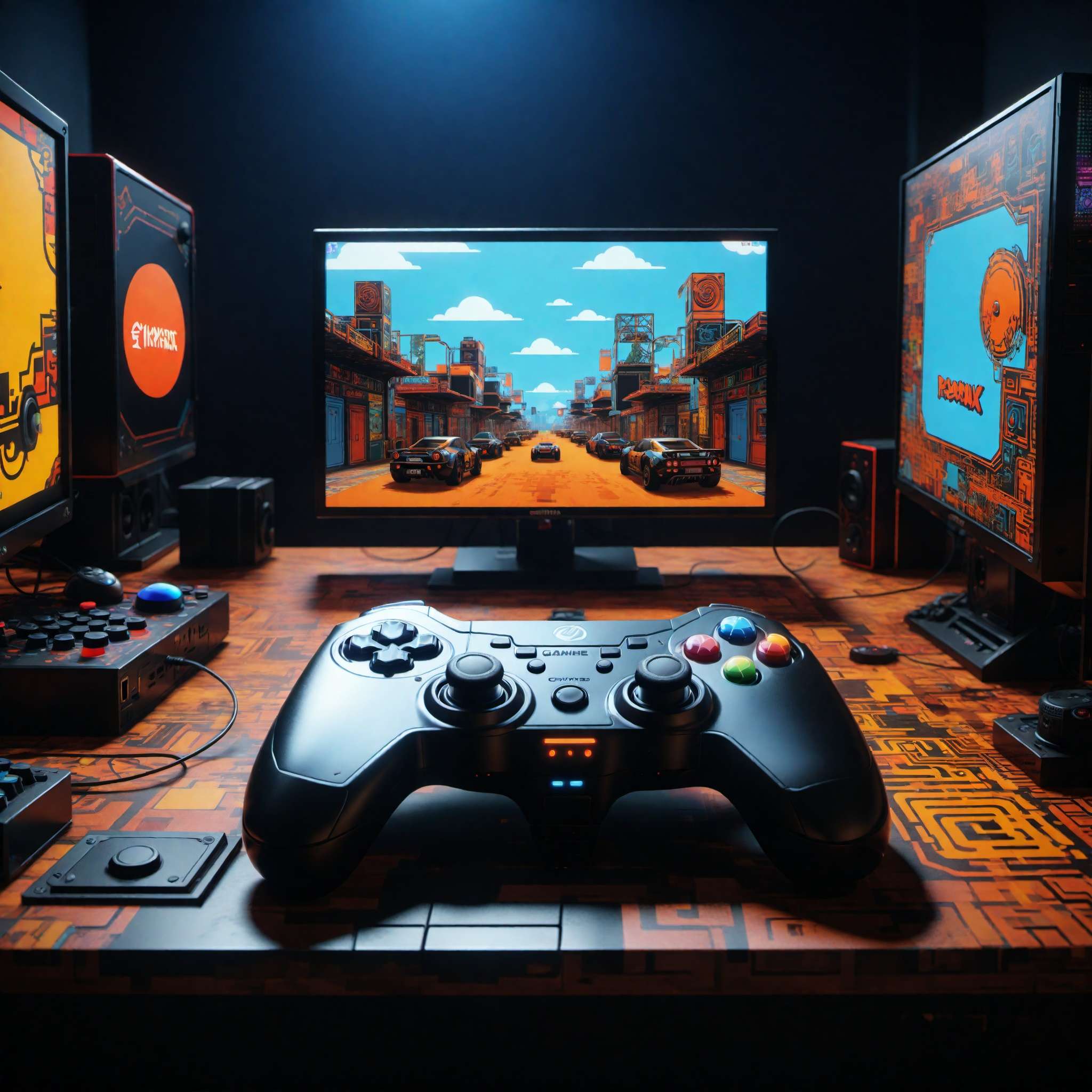
© Copyright , ZombieBunny.Org
Retro gaming in a modern context
In today’s era of high-definition graphics, virtual reality, and complex gameplay mechanics, the resurgence of retro gaming may seem like a paradox. However, retro games have found their place in the modern gaming landscape, offering a unique blend of old and new.
In the modern context, retro gaming takes on many forms. Some players enjoy original games on vintage consoles, cherishing the tactile experience of using a cartridge or disk. Others delve into the world of emulators and ROMs, playing classic games on modern devices. Digital distribution platforms have also embraced the trend, offering a vast library of classic games for download.
In addition to playing old games, the retro aesthetic has influenced modern game design. Many new games adopt a retro-inspired look, with pixel art graphics and chiptune soundtracks. These games combine the charm of retro games with modern gameplay innovations, offering a unique gaming experience that appeals to a broad audience.
Furthermore, the gaming community has embraced the retro gaming trend. Online forums, social media groups, and gaming conventions celebrate the culture of retro gaming, fostering a sense of camaraderie among gamers. This community aspect has played a significant role in keeping the spirit of retro gaming alive.
In essence, while technology continues to push the boundaries of gaming, the retro gaming trend represents a celebration of the medium’s roots. It’s a testament to the timeless appeal of these classic games and their enduring place in the modern gaming landscape.
Influence of retro gaming on modern games
Retro gaming has left an indelible mark on the modern gaming landscape, influencing game design, aesthetics, and even player expectations. This influence is most evident in the emergence of modern games that adopt retro-inspired aesthetics. From pixel art graphics to chiptune music, these games pay homage to their retro counterparts while offering a fresh take on the classic gaming experience.
Gameplay mechanics from retro games have also found their way into modern games. The ‘easy to learn, hard to master’ principle, a hallmark of many retro games, is evident in numerous modern games, appealing to both casual gamers and hardcore enthusiasts. Many modern game developers look to retro games for inspiration, incorporating elements like side-scrolling action, platforming challenges, and straightforward narratives into their games.
Moreover, the cultural impact of retro games has shaped player expectations and preferences. The enduring popularity of iconic characters like Mario and Sonic and the ongoing demand for remakes and remasters of classic games highlight the lasting impression these games have made on players.
Finally, the rise of indie game development has further cemented the influence of retro gaming. Many indie developers, inspired by the games they grew up playing, create games that echo the charm and simplicity of retro games. This trend has resulted in a diverse gaming landscape where retro-inspired games coexist alongside AAA titles, each offering unique experiences that cater to a broad range of player preferences.
Retro games on modern platforms
One of the factors contributing to the resurgence of retro gaming is the accessibility of classic games on modern platforms. Over the past few years, there’s been a significant rise in the availability of retro games on digital platforms, making it easier for gamers to revisit their favorite classics or discover new ones.
Major companies like Nintendo, Sega, and Sony have jumped on the retro gaming bandwagon, offering digital downloads of classic games on their modern consoles. Nintendo’s Virtual Console service and Sony’s PlayStation Classic are prime examples, offering a vast library of classic games from their respective back catalogs.
Moreover, the advent of dedicated retro consoles, such as the NES Classic Edition and the Sega Genesis Mini, has provided gamers with a more authentic retro gaming experience. These plug-and-play consoles come preloaded with a selection of classic games, offering a mix of nostalgia and convenience.
The rise of mobile gaming has also played a role in bringing retro games to modern platforms. Classic games have found a new home on smartphones and tablets, with many retro titles available as mobile apps. This trend has made retro games more accessible than ever, allowing gamers to enjoy their favorite classics on the go.
In essence, the integration of retro games into modern platforms has played a pivotal role in the resurgence of retro gaming. It’s a testament to the timeless appeal of these games and their enduring place in the gaming landscape.
Remaking the Classics: The Art of Game Revival
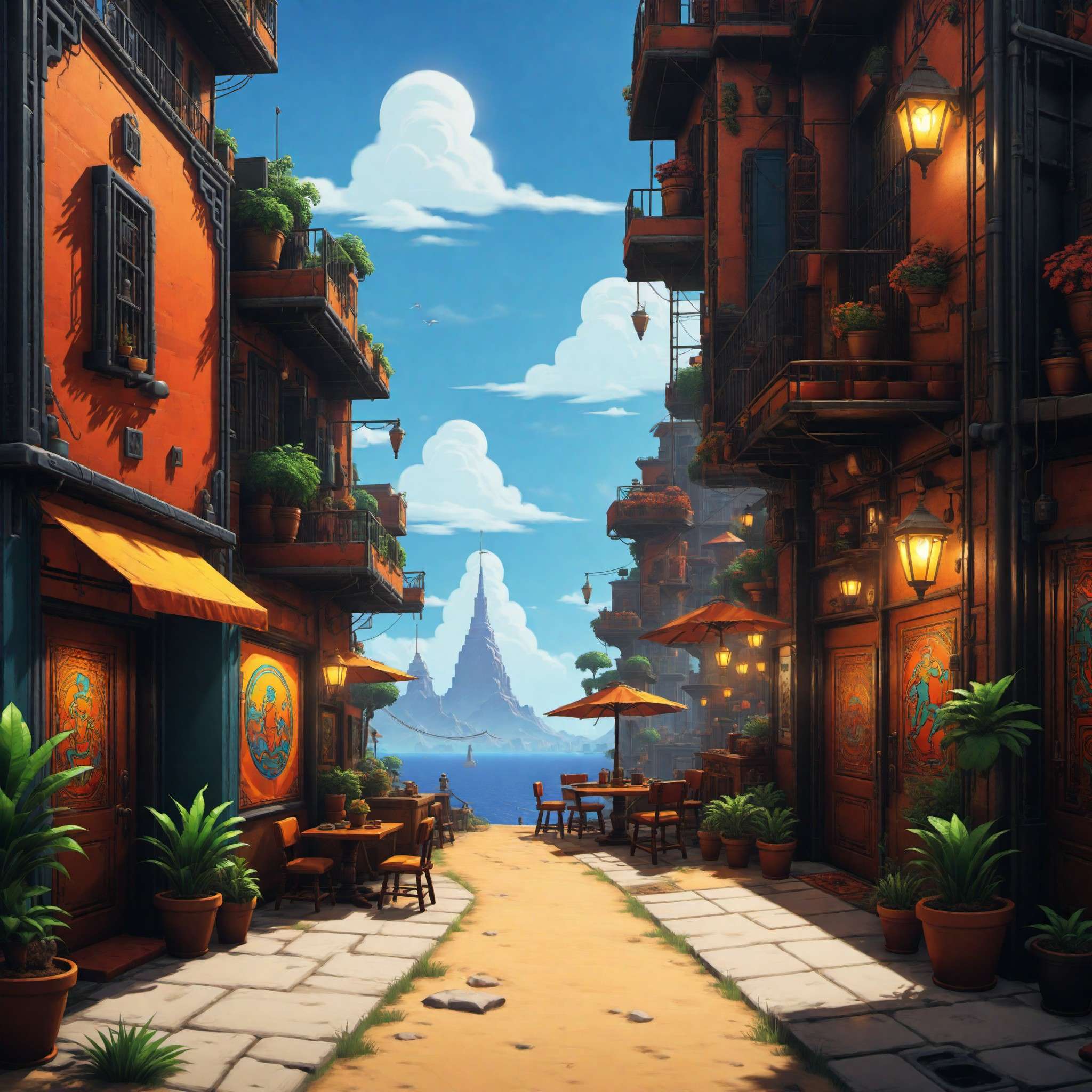
© Copyright , ZombieBunny.Org
Remastering and remaking classic games
One of the exciting trends in the resurgence of retro gaming is the remastering and remaking of classic games. This process involves updating the graphics, sound, and sometimes even the gameplay of old games, enhancing them for modern systems while preserving their original charm and spirit.
Remastering typically involves improving the game’s technical aspects, such as increasing the resolution, updating the sound quality, or smoothing out the game’s performance. A well-executed remaster can breathe new life into a classic game, making it more appealing to modern gamers while retaining the elements that made the game popular in the first place.
Remakes, on the other hand, are more comprehensive. They involve reimagining the game from the ground up, often with updated gameplay mechanics, revised story elements, and modern graphics. A successful remake not only captures the essence of the original game but also adds new dimensions that enhance the gaming experience.
Notable examples of remastered and remade games include the ‘Crash Bandicoot N. Sane Trilogy,’ ‘The Legend of Zelda: Link’s Awakening,’ and ‘Final Fantasy VII Remake.’ These games have been critically acclaimed for their faithful recreation of the original games and their enhancements that make them feel fresh and relevant in today’s gaming landscape.
In essence, remastering and remaking classic games is an art form. It involves a delicate balance of preserving the past and embracing the present, ensuring that these timeless classics continue to captivate gamers in the modern era.
The process of game revival
The process of game revival, whether through remastering or remaking, is a delicate balance of preserving the essence of the original game while updating it for modern audiences. It involves a deep understanding of what made the classic game successful and a clear vision of how to enhance it without losing its original charm.
The first step in the game revival process is identifying the key elements of the original game that resonated with players. This could be anything from the game’s unique mechanics, the compelling narrative, the memorable characters, or even the iconic soundtrack. These elements form the foundation upon which the revival is built.
Once the core elements are identified, the next step is to update the game’s technical aspects. This could involve enhancing the graphics to meet modern standards, improving sound quality, optimizing performance, and even revamping the user interface for better accessibility.
In some cases, the gameplay mechanics might also be updated to align with modern gaming trends. This could mean introducing new mechanics, refining existing ones, or even simplifying them for a more streamlined experience. However, it’s crucial that these changes are done in a way that respects the original gameplay, ensuring that the game still feels familiar to fans of the original.
The final step is testing and refining the game to ensure it delivers a seamless and enjoyable gaming experience. This involves rigorous testing, gathering player feedback, and making necessary adjustments.
In essence, the game revival process is a labor of love. It’s about honoring the past, embracing the present, and creating a game that appeals to both nostalgic gamers and new players alike.
Successful examples of remade classics
The gaming industry has seen numerous successful examples of remade classics. These games have not only captured the magic of the original titles but have also added a modern twist that resonates with today’s gaming audience.
One such example is ‘Resident Evil 2 Remake.’ This game is a complete reimagining of the classic survival horror game from 1998. It features updated graphics, revised controls, and new gameplay elements that enhance the horror and tension of the original game. The remake was a critical and commercial success, praised for its faithful recreation of the original game’s atmosphere and its modern enhancements.
Another notable example is ‘The Legend of Zelda: Link’s Awakening.’ This remake of the classic 1993 Game Boy title features updated graphics, remastered music, and new gameplay features, all while preserving the charm and whimsy of the original game. The game received critical acclaim for its faithful adaptation of the original game and its updated visuals and gameplay mechanics.
Finally, ‘Final Fantasy VII Remake’ is another testament to the successful revival of a classic game. The game takes the beloved 1997 RPG and transforms it into a modern gaming masterpiece, with updated graphics, a revamped combat system, and expanded story elements. The game was lauded for its respectful homage to the original while also pushing the boundaries of what a remake can achieve.
These examples highlight the potential of remaking classic games. When done right, they can capture the nostalgia of the original while offering a fresh and engaging gaming experience for modern players.
Retro Gaming Community: United by Pixels
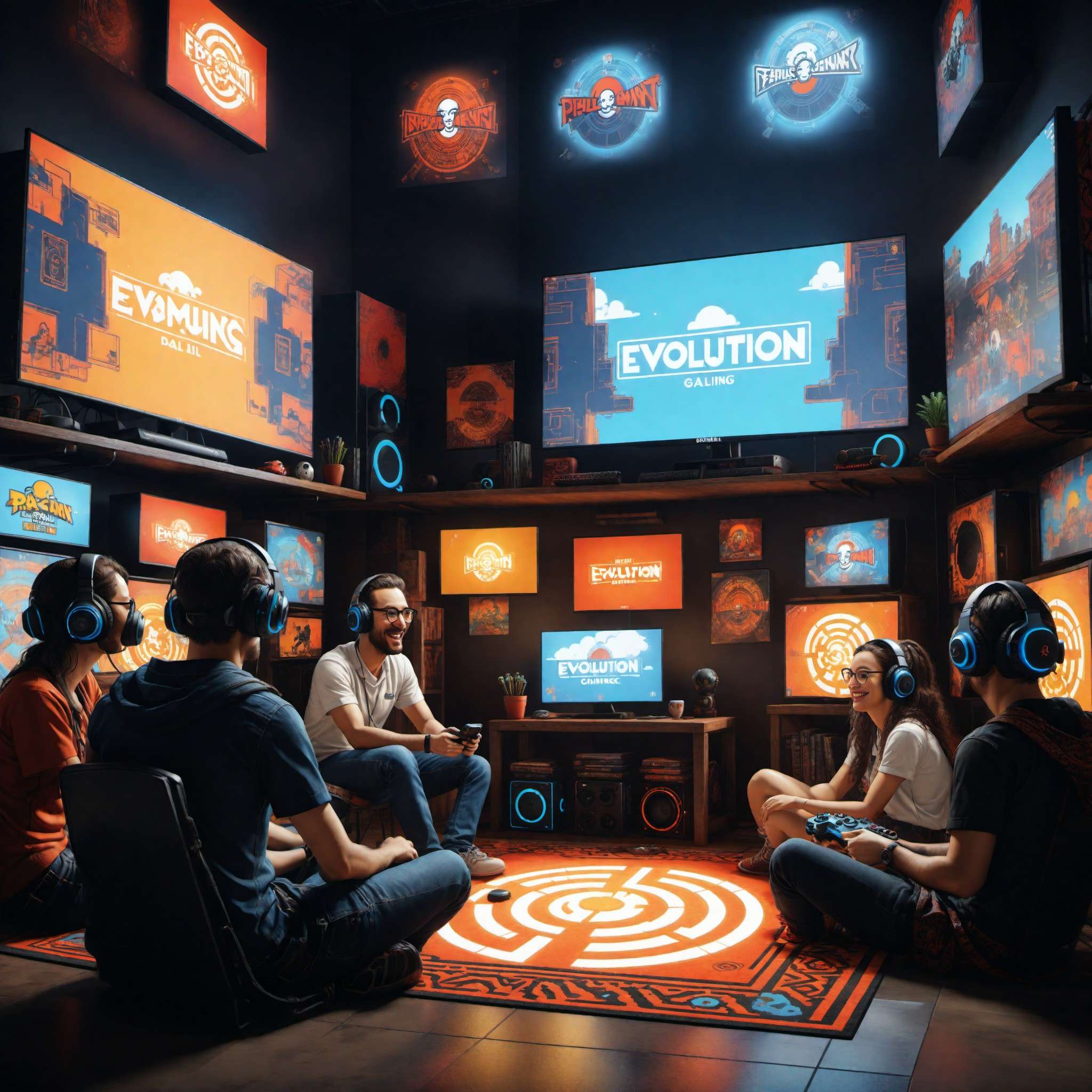
© Copyright , ZombieBunny.Org
The vibrant retro gaming community
The resurgence of retro gaming has been accompanied by the growth of a vibrant and passionate community of gamers. United by their love for classic games, these players share a deep appreciation for the art, design, and history of retro games.
This community thrives in both online and offline spaces. Online forums and social media platforms serve as gathering places for retro gaming enthusiasts to connect, discuss favorite games, share tips and tricks, and even trade or sell vintage gaming equipment. These interactions foster a sense of camaraderie and mutual respect, forming a supportive and inclusive community that welcomes gamers of all ages and backgrounds.
Offline, the retro gaming community comes together at gaming conventions and tournaments. Events like the Classic Gaming Expo and the Retro Gaming Expo offer gamers an opportunity to meet in person, share their passion for retro games, and even compete in classic gaming tournaments. These events often feature panels with game developers, showcases of rare gaming artifacts, and opportunities to play classic games, making them a haven for retro gaming enthusiasts.
The retro gaming community also plays a vital role in preserving the history of gaming. Many gamers in the community are collectors, preserving vintage games and consoles and sharing their knowledge with others. This collective effort ensures that these classic games and the memories associated with them continue to be appreciated and enjoyed by future generations.
In essence, the retro gaming community is more than just a group of gamers. It’s a diverse and vibrant community that celebrates the past, enjoys the present, and looks forward to the future of gaming.
Role of community in keeping retro gaming alive
The community plays a pivotal role in keeping the spirit of retro gaming alive. United by a shared passion for classic games, these enthusiasts not only consume retro gaming content but also contribute to its preservation and proliferation.
Online, the community serves as a vibrant hub for discussion, knowledge sharing, and camaraderie. Forums and social media groups dedicated to retro gaming are teeming with lively discussions about classic games, tips and tricks, and even troubleshooting advice for vintage consoles. These platforms also serve as a marketplace for trading and selling retro games and hardware, making them accessible to a wider audience.
Offline, retro gaming enthusiasts come together at conventions, swap meets, and tournaments. These events not only offer a chance to play classic games but also provide a platform for gamers to connect, exchange ideas, and build friendships. They serve as a testament to the enduring appeal of retro games and the tight-knit community that supports them.
Community-driven initiatives also play a crucial role in preserving the legacy of retro gaming. From fan-run websites that archive game manuals and artwork to the tireless efforts of collectors who preserve and restore old hardware, these endeavors ensure that the history of retro gaming is kept alive for future generations.
In essence, the retro gaming community is more than a group of enthusiasts. It’s a diverse, dynamic collective that champions the cause of retro gaming, ensuring its continued relevance and resonance in a rapidly evolving gaming landscape.
How to be part of the community
If you’re passionate about retro gaming and want to be part of the community, there are several ways to get involved. The first step is to connect with other retro gaming enthusiasts. Online platforms like Reddit, Facebook groups, and gaming forums are great places to start. These communities are full of gamers eager to discuss their favorite classic games, share gaming tips, and even trade vintage gaming gear.
Attending gaming conventions is another excellent way to be part of the community. Events like the Classic Gaming Expo or Retro Gaming Expo offer opportunities to meet like-minded gamers, participate in tournaments, and learn from industry experts. It’s also a chance to experience the camaraderie and shared enthusiasm that make the retro gaming community special.
If you’re interested in the preservation side of retro gaming, consider getting involved in initiatives that archive and restore classic games. Many fan-run websites and organizations work on cataloging game manuals, artwork, and even creating emulators to ensure these classics continue to be accessible.
Sharing your passion with others through content creation can also help you connect with the community. Whether it’s starting a retro gaming blog, creating video content, or streaming classic games, sharing your experiences and insights can help inspire and educate others.
In essence, being part of the retro gaming community involves active participation and contribution. It’s about sharing your passion, learning from others, and helping preserve the legacy of retro gaming. So dive in, start connecting, and enjoy the camaraderie and nostalgia that make this community truly special.
Collecting the Past: Retro Gaming as a Hobby

© Copyright , ZombieBunny.Org
Retro gaming as a hobby
Retro gaming has evolved from a nostalgic pastime into a popular hobby for many enthusiasts. It provides a unique blend of collecting, preservation, and gameplay that appeals to a wide range of people. Whether it’s the thrill of hunting down a rare vintage game, the satisfaction of restoring an old console, or the simple joy of playing a classic title, retro gaming as a hobby offers a rich and rewarding experience.
Collecting is a significant aspect of the retro gaming hobby. Many enthusiasts take pride in curating a collection of vintage games and consoles, each piece a tangible link to gaming’s past. The hunt for these items can take collectors to online marketplaces, thrift stores, garage sales, and gaming conventions, making each find a rewarding achievement.
Restoration and preservation are also important facets of the hobby. Many retro gaming enthusiasts enjoy the process of repairing and restoring old hardware, keeping these vintage machines alive and functional. This aspect of the hobby not only requires technical skills but also a deep appreciation for the history and craftsmanship of these old consoles.
Of course, at the heart of the hobby is the love for playing these classic games. Despite the advancements in gaming technology, the simple yet engaging gameplay of retro games continues to captivate players. Whether it’s beating a high score, completing a challenging level, or simply enjoying the game’s story and characters, the joy of playing retro games remains a timeless appeal.
In essence, retro gaming as a hobby represents a celebration of gaming’s past. It’s a journey that involves collecting, preserving, and playing, each aspect adding to the charm and appeal of this unique hobby.
The allure of game collecting
Game collecting is a cornerstone of the retro gaming hobby, driven by the thrill of the hunt, the satisfaction of ownership, and the nostalgia these classic games evoke. For many collectors, each game or console is more than just an object; it’s a piece of gaming history and a treasured memento of their personal gaming journey.
The thrill of the hunt is a powerful motivator for many collectors. Searching for a rare game or vintage console can be an exciting adventure, taking collectors to online marketplaces, flea markets, garage sales, and gaming conventions. The moment of stumbling upon a rare find or finally acquiring a long-sought-after game is a rewarding experience that fuels the passion for collecting.
Ownership also plays a significant role in the allure of game collecting. Having a physical collection gives a sense of accomplishment and pride. Each game or console in a collection tells a story, whether it’s the tale of its creation and impact on the gaming industry, or the personal memories associated with playing the game.
Nostalgia, too, is a powerful factor. Collecting retro games allows gamers to revisit their past, bringing back fond memories of their youth. It’s a way to reconnect with simpler times and relive the joy and excitement of playing these games for the first time.
In essence, game collecting is more than just accumulating items. It’s a journey through the history of gaming, a celebration of nostalgia, and a testament to the enduring appeal of retro games.
Tips for starting a collection
Starting a retro game collection can be an exciting endeavor. However, it can also feel overwhelming due to the sheer volume of games and consoles available. Here are some tips to help you embark on your collecting journey.
Firstly, define your focus. Are you interested in collecting games from a specific console, a particular genre, or do you want to focus on games from a certain era? Having a clear focus can guide your collecting efforts and make the process more manageable and enjoyable.
Secondly, do your research. Understanding the value and rarity of games can help you make informed decisions. Online resources, collector’s guides, and retro gaming forums can provide valuable insights. Additionally, learning about the maintenance and preservation of vintage hardware can help you keep your collection in good condition.
Next, be patient. Building a collection takes time. Don’t rush to acquire everything at once. Part of the joy of collecting is the hunt, so take your time and enjoy the process.
Lastly, connect with the community. Joining retro gaming forums and social media groups can provide valuable advice, resources, and support. You can learn from experienced collectors, discover new places to find games, and even make trades.
In essence, starting a retro game collection is a journey of discovery. It’s about exploring the history of gaming, cherishing the nostalgia, and creating a personal collection that reflects your passion for retro gaming. Remember to enjoy the process, and happy collecting!
The Future of Retro Gaming: Pixels Here to Stay
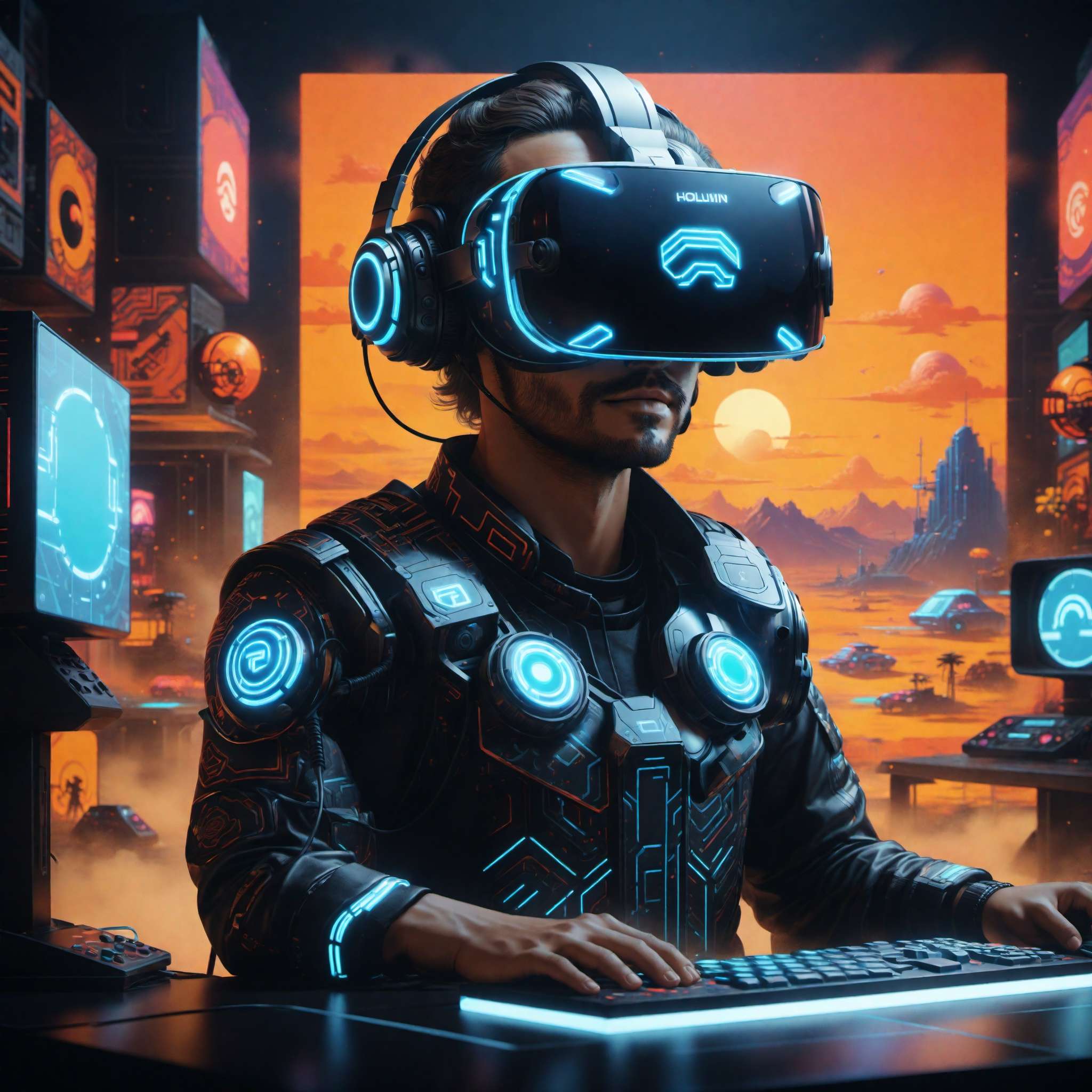
© Copyright , ZombieBunny.Org
Predictions for the future of retro gaming
Looking ahead, the future of retro gaming appears bright and promising. The enduring appeal of classic games, the passion of the retro gaming community, and the industry’s recognition of this trend suggest that retro gaming is here to stay.
One anticipated trend is the continued remastering and remaking of classic games. As technology advances, we can expect to see more of our favorite retro games revived with modern graphics, enhanced sound, and updated gameplay mechanics. These revivals will likely continue to respect the original games’ essence while adding a fresh appeal for today’s gaming audience.
Another prediction is the growth of the retro gaming community. As more gamers discover the charm of classic games, the community of retro gaming enthusiasts is likely to expand. This growth will likely fuel further interest in retro gaming events, online forums, and vintage game and hardware collecting.
Furthermore, we might see more integration of retro gaming into modern gaming platforms. With the popularity of digital downloads and the potential of cloud gaming, classic games could become even more accessible to gamers on various devices.
Lastly, we might see more indie developers drawing inspiration from retro games. The success of retro-inspired indie games suggests there’s a market for games that combine the charm of retro aesthetics and gameplay with modern game design principles.
In essence, while we can’t predict the future with certainty, the current trends suggest that retro gaming will continue to hold a significant place in the gaming landscape. The love for retro gaming isn’t just nostalgia; it’s a celebration of the timeless appeal of well-crafted games.
Upcoming retro revival games
In line with the resurgence of retro gaming, the gaming industry is seeing several upcoming games that tap into the nostalgia of classic titles. These retro revival games aim to capture the charm and appeal of classic games, while offering a fresh and modern gaming experience.
One of the highly anticipated retro revival games is the ‘Streets of Rage 4.’ The game is a continuation of the classic ’90s beat ’em up series, featuring updated graphics, new gameplay mechanics, and a fresh soundtrack. It’s a perfect example of how a beloved classic can be revived for the modern gaming audience.
Another upcoming title is ‘Alex Kidd in Miracle World DX.’ This game is a remake of the classic platformer from the Sega Master System era. It promises to deliver a faithful recreation of the original game, enhanced with modern graphics, improved controls, and new levels.
Also notable is ‘Wonder Boy: Asha in Monster World,’ a remaster of the classic action-adventure game ‘Monster World IV.’ The game features updated visuals, re-orchestrated music, and the return of the original game’s creators, promising a nostalgic yet fresh gaming experience.
These upcoming retro revival games underscore the ongoing appeal of classic games. They demonstrate how the gaming industry is leveraging nostalgia, modern technology, and innovative game design to create games that resonate with both nostalgic gamers and new players. It’s an exciting time for retro gaming, with these upcoming titles promising to carry the torch of classic gaming into the future.
The role of technology in shaping the future
As we look towards the future of retro gaming, it’s clear that technology will play a pivotal role in shaping its direction. From the remastering of classic games to the integration of retro games into modern platforms, technology is enabling new ways for gamers to experience these timeless classics.
One key area where technology is making an impact is in the remastering and remaking of classic games. Advanced graphics engines, improved sound technology, and modern game design principles are being used to breathe new life into classic games, enhancing their visuals, sound, and gameplay while preserving their original charm.
The rise of digital distribution platforms is another technological advancement that’s influencing the future of retro gaming. These platforms have made it easier for gamers to access classic games, allowing them to download and play their favorite retro titles on modern consoles, PCs, and even mobile devices. Cloud gaming technology could further expand the accessibility of these games, making them available to play on any device with an internet connection.
Finally, technology has also made it possible for the community to play a more active role in the preservation and celebration of retro gaming. Communities can now come together online to share their passion for classic games, exchange knowledge, and even collaborate on projects such as creating emulators or archiving game manuals and artwork.
In essence, technology is not just shaping the future of retro gaming; it’s also enabling us to keep the past alive. It’s a tool that allows us to revisit our cherished gaming memories while creating new ones in the modern gaming landscape.
Conclusion: The Timeless Charm of Retro Gaming
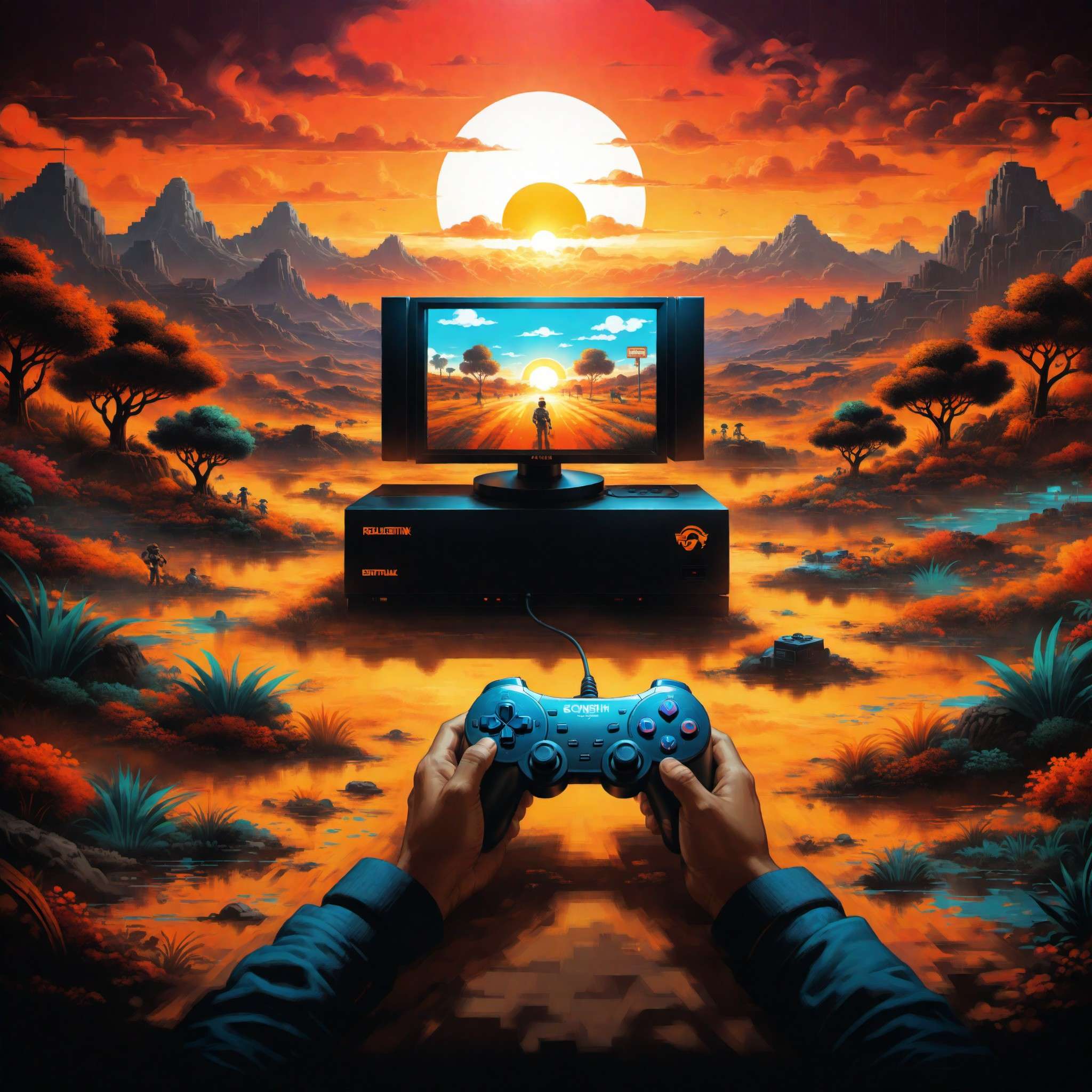
© Copyright , ZombieBunny.Org
Recap of the retro gaming resurgence
The resurgence of retro gaming is a testament to the timeless appeal of classic games. These games, characterized by their simplicity, creativity, and charm, have captured the hearts of gamers across generations. This resurgence is not just about nostalgia; it’s a celebration of the history, art, and craft of video games.
The revival of retro games on modern platforms has played a significant role in this resurgence. Through digital downloads, dedicated retro consoles, and mobile apps, classic games have become more accessible than ever, allowing gamers to revisit their favorite classics or discover new ones.
The remastering and remaking of classic games have also contributed to the retro gaming revival. By enhancing the graphics, sound, and gameplay of old games while preserving their original charm, these remasters and remakes offer a fresh and modern gaming experience that resonates with today’s gaming audience.
At the heart of this resurgence is the vibrant and passionate community of retro gaming enthusiasts. These gamers, united by their love for classic games, contribute to the preservation and proliferation of retro gaming through their active participation in online forums, gaming conventions, and preservation initiatives.
As we look towards the future, it’s clear that retro gaming is here to stay. Driven by the enduring appeal of classic games, the passion of the community, and the possibilities offered by modern technology, retro gaming will continue to hold a significant place in the gaming landscape. The resurgence of retro gaming is not just a trend; it’s a recognition of the timeless charm of these pixelated classics.
Final thoughts on the charm of retro gaming
Retro gaming, with its unique blend of nostalgia, simplicity, and timeless appeal, holds a special place in the hearts of gamers around the world. Despite the rapid advancements in gaming technology, these pixelated classics continue to captivate players, proving that great gaming experiences are not defined by high-end graphics or complex mechanics, but by creativity, innovation, and the ability to evoke emotion.
The charm of retro gaming lies in its accessibility and universality. These games, with their simple controls and straightforward gameplay, are easy to pick up and play, making them appealing to gamers of all ages and skill levels. Their enduring popularity transcends borders and cultures, uniting gamers worldwide in their shared love for these classics.
The resurgence of retro gaming is not just a passing trend, but a celebration of the history and heritage of video games. It’s a reminder of the humble beginnings of the gaming industry, the progress we’ve made, and the potential for the future. It’s a testament to the timeless appeal of these classic games, and a tribute to the game developers who created these enduring masterpieces.
As we move forward, the charm of retro gaming will continue to inspire and delight gamers. Whether it’s through the remastering of classic games, the preservation efforts of the community, or the creation of new games inspired by retro aesthetics and mechanics, the spirit of retro gaming will continue to live on. In the pixelated landscapes of these classic games, we find not just nostalgia, but a timeless charm that continues to captivate us, reminding us of the joy and wonder of gaming.
Invitation to experience retro gaming
If you’ve yet to experience the charm of retro gaming, there’s no better time than now to dive in. Whether you’re a seasoned gamer looking to revisit the classics of your youth or a newcomer curious about the roots of modern gaming, the world of retro gaming is a treasure trove of unique experiences waiting to be discovered.
Step into the pixelated worlds of classic games, where simple yet engaging gameplay, memorable characters, and catchy soundtracks create an immersive gaming experience that transcends time. Experience the thrill of hunting down a rare vintage game, the satisfaction of restoring an old console, or the joy of achieving a high score in a classic arcade game.
Join the vibrant community of retro gaming enthusiasts, where you can share your passion for classic games, learn from experienced collectors, and even contribute to the preservation of gaming history. Attend retro gaming conventions, participate in online forums, or even start your own collection of vintage games and consoles.
Explore the world of remastered and remade classics, where old favorites are given a new lease of life with modern graphics, enhanced sound, and updated gameplay mechanics. Discover how these games honor their original versions while offering a fresh and modern gaming experience.
In essence, retro gaming is more than just a hobby or pastime. It’s a journey through the history of gaming, a celebration of nostalgia, and a testament to the timeless appeal of well-crafted games. So why wait? Dive into the world of retro gaming and experience the charm of these pixelated classics for yourself.
Please support our site and purchase something from our store.







